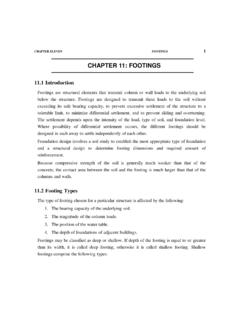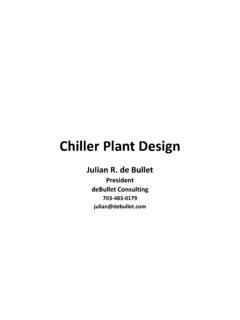Transcription of Wind Turbines – Components and Design Basics
1 Stephan Matthiesen Project (FH) Meik Schacknies Design DepartmentParis October 2009 wind Turbines Components and Design Basics2 Overview Part I Product range Components of a wind turbineWind Turbines Components and Design BasicsOverviewPart II Load assumptions for wind Turbines Loads and load cases Rocking spring stiffness3 wind Turbines Components and Design BasicsRated power:330 kWHub height:44 50 mRated power:900 kWHub height:45 m / 55 mRated power:800 kWHub height:50 76 m4 wind Turbines Components and Design BasicsRated power:800 kWHub height:73 mRated kWHub height:64 113 mRated kWHub height:78 138 m5 wind Turbines Components and Design BasicsHighest power producing WEC worldwide:Rated kWRotor diameter:127 mHub height:135 mPower production:20 Mio.
2 KWh Produces electricity for more than 5000 households 35% more yield compared to predecessor - E-112 Two-segment rotor blade facilitates transport6 wind Turbines Components and Design Basics -> blades-> nacelle with generator and hub-> tower (steel / concrete)-> electrical installation and grid connection-> foundation -> with piles or soil improvement (if necessary)7 wind Turbines Components and Design Basics -> blades8 wind Turbines Components and Design Basics9 wind Turbines Components and Design Basics -> nacelle10 wind Turbines Components and Design Basics -> steel tower11 wind Turbines Components and Design Basics -> concrete tower12 wind Turbines Components and Design Basics -> foundation with basket13 wind Turbines Components and Design Basics -> foundation with section14 wind Turbines Components and Design Basics -> foundation for concrete tower15 Overview Part I Product range Components of a wind turbineWind Turbines Components and
3 Design BasicsOverviewPart II Design situations for wind Turbines Loads and load cases Rocking spring stiffness16 wind Turbines Components and Design BasicsDesign situationsEnvironmental conditions wind , Temperature, Ice, EarthquakeOperational conditions Normal operation and power production Start up, shut down, idling, standstillTemporary conditions Transportation of Components Installation and assembling Maintenance and repair17 wind Turbines Components and Design BasicsDesign load cases Normal operation and normal external conditions Normal operation and extreme external conditions extreme wind speed extreme direction change extreme dynamic wind shear Fault situations and appropriate external conditions Control system fault Electrical fault Yaw system fault Transportation.
4 Installation and maintenance situationswind direction18 wind Turbines Components and Design BasicsLoad cases for operational and environmental conditions defined in EN 61400-119 wind Turbines Components and Design Basics [Hau 2005]Due to the nature of wind the loads are high variable ! mean wind , gravity loads (steady) turbulence, earthquake (stochastic) unbalanced mass, rotor frequency (periodic) start up / shut down, gusts(transient) Loads are calculated with special computation program in time domain. Load calculations have to determined for each type Turbines Components and Design BasicsDifferent aspects for structural Design Loads(Ultimate Limit State) Loads(Ultimate Limit State) of Components (ULS and SLS)- Vibrations (resonance effects)- Deflections (distance between blade and tower)21 Vibrations - Rocking spring stiffness k ,dynTo avoid resonance we have to consider the stiffness of the Components but also the soil-structure interaction.
5 The eigenfrequency of the system machine - tower foundation - soilshall not be in the range of the variable frequencies. To ensure this requirement a minimum stiffness of foundation and soil is necessary. Rotational spring stiffness Mass of WEC Tower System: wind Turbines Components and Design Basics22 wind Turbines Components and Design BasicsEigenmodes of the tower structureImportant Design parameter for WEC:- Rotational frequency of rotor (1P)- Rotational frequency of one blade (3P)- Eigenfrequencies of the whole system (1. EF / 2. EF)23 wind Turbines Components and Design BasicsMerci pour votre attentio
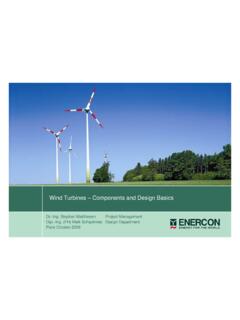
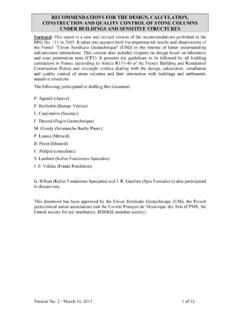
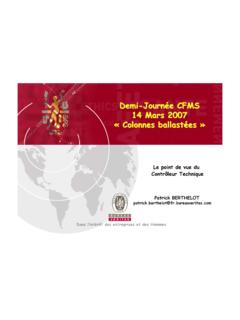




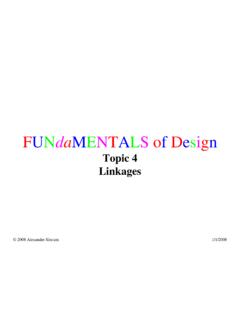
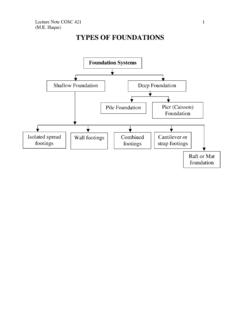
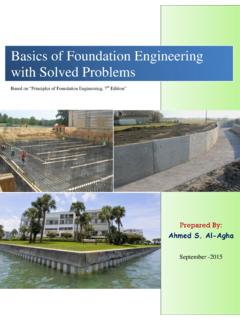


![Pile Foundation Design[1] - ITD](/cache/preview/7/1/b/5/4/9/2/e/thumb-71b5492ea36fbc0a87c29e49c6fa8bff.jpg)
